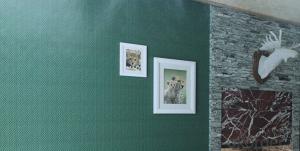Fiberglass mesh, a versatile and innovative material, has been making waves in the construction industry for its ability to reinforce concrete structures. It’s not just another material; it’s a game-changer. Imagine a material that is lightweight, strong, and resistant to corrosion. That’s fiberglass mesh for you!
The Magic of Fiberglass Mesh
Fiberglass mesh is woven from fine glass fibers, creating a fabric that is not only visually appealing but also incredibly strong. It’s like a superhero cape for your concrete structures, providing them with the strength they need to stand tall against the test of time and weather.
Why Fiberglass Mesh Reigns Supreme
When it comes to reinforcing concrete, there are several contenders, but fiberglass mesh takes the crown for several reasons. Let’s dive into the world of construction and explore why this material is the top choice for many professionals.
1. Corrosion Resistance
One of the biggest concerns with traditional steel reinforcement is the risk of corrosion. Over time, steel can rust, weaken, and eventually fail, compromising the structural integrity of the concrete. Fiberglass mesh, on the other hand, is resistant to corrosion, ensuring a longer lifespan for your structures.
2. Lightweight and Easy to Handle
Gone are the days of struggling with heavy steel reinforcements. Fiberglass mesh is a breeze to work with, making it easier for construction crews to handle and install. This not only speeds up the construction process but also reduces the risk of injury on the job site.
3. Enhanced Durability
The durability of fiberglass mesh is unmatched. It can withstand a variety of harsh conditions, from extreme temperatures to exposure to chemicals. This makes it an ideal choice for structures in diverse environments.
4. Non-conductive and Non-magnetic
Fiberglass mesh is a non-conductive material, which means it won’t interfere with electrical systems or attract magnets. This is particularly useful in settings where electromagnetic interference is a concern.
5. Cost-Effective
While the initial investment in fiberglass mesh may be slightly higher than traditional materials, the long-term savings are significant. The reduced need for maintenance and the extended lifespan of structures reinforced with fiberglass mesh make it a cost-effective choice in the long run.
A Closer Look at the Installation Process
Installing fiberglass mesh is a straightforward process that can be broken down into a few simple steps. Let’s take a closer look at how it’s done.
1. Surface Preparation
Before you can install the mesh, the surface of the concrete needs to be prepared. This involves cleaning the surface to remove any dirt, debris, or loose particles that could interfere with the bonding process.
2. Application of Adhesive
Once the surface is clean, an adhesive is applied to the concrete. This adhesive serves as the glue that will hold the mesh in place, ensuring a strong bond between the mesh and the concrete.
3. Placement of Mesh
With the adhesive in place, the fiberglass mesh is then carefully laid out over the surface. It’s important to ensure that the mesh is evenly distributed and that there are no wrinkles or folds that could compromise its effectiveness.
4. Tensioning and Securing
After the mesh is in place, it needs to be tensioned and secured to prevent it from shifting during the curing process. This is typically done using staples or special fasteners designed for this purpose.
5. Final Inspection
Once the mesh is secured, a final inspection is conducted to ensure that the installation has been done correctly and that the mesh is properly bonded to the concrete.
The Future of Structural Stability
Fiberglass mesh is not just a passing trend; it’s the future of structural stability. As we continue to push the boundaries of construction and design, this material will play a crucial role in ensuring that our structures are not only strong but also sustainable.
In conclusion, fiberglass mesh is a powerful ally in the world of concrete reinforcement. Its unique properties make it an ideal choice for a wide range of applications, from residential to commercial and industrial projects. So, the next time you’re planning a construction project, consider giving this superhero material a try. You might just be surprised at how it transforms your structure’s strength and longevity.

